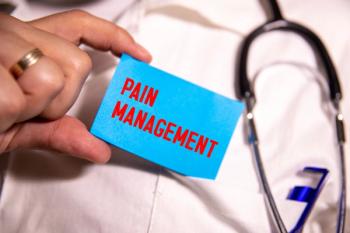
- December 2012 Heart Health
- Volume 78
- Issue 12
Dental and Cardiovascular Diseases: The Tragic Link
Heart health may be improved by improving oral hygiene.
Heart health may be improved by improving oral hygiene.
Cartoonists love teeth. Caricatures of famous people almost always exaggerate toothy smiles—Lady Gaga’s overbite, President Obama’s grin, Julia Roberts’ pearly whites. And, children roar when a cartoon character’s dentures leap from his mouth and rattle off. But when dental caries and periodontitis occur, teeth and the potential to lose them are no laughing matter.
A century ago, total tooth loss by age 65 years was common. Today, 70% of Americans have access to fluoridated water and most have basic dental care. Consequently, improved dental care has been identified as one of the most significant achievements in American health care in the last century. In fact, 76% of Americans have teeth that last their lifetime, leaving just 24% toothless by age 75 years—and that is still too many edentulous people.
Healthy People 2020 has several objectives to continue improving Americans’ oral health. Why? One reason is a tragic link between poor oral health and poor general health.1
Potential Connections
Periodontal disease—inflammation of tissues surrounding and supporting the teeth—is a chronic immune disease. It starts with gingival inflammation as the body fights periodontopathogenic antigens, and can progress until the entire periodontium becomes involved. If the alveolar bone, cementum, and periodontal ligament are affected, bone and tissue loss can be irreversible, and tooth loss is almost inevitable.2 In the United States, up to half of adults have mild to moderate periodontal disease, and 5% to 15% of adults are afflicted with severe, generalized periodontal disease.3
Although many risk factors have been identified, the most important are related to demographics (age, race, and gender), lifestyle (smoking, poor diet, and stress), and underlying disease (diabetes, osteoporosis). Low socioeconomic status and limited access to health services are also risk factors.3
Many studies have looked at poor dental care as a risk factor for cardiovascular disease (CVD). The results have been inconsistent, but most studies support a modest association between them.4 The first prospective cohort study, published in 1993 (n = 1000), found that patients with dental disease had a 25% increase in CVD. Men younger than 50 years had a significantly higher risk.5 Since then, investigating the relationship between dental disease and CVD has become a priority.
Inflammation
Atherosclerosis and periodontal disease share 1 significant trait: inflammation. Researchers propose that periodontal disease, as both a local and systemic inflammatory process, can cause inflammation in the vascular endothelium. This, in turn, may increase the likelihood of atherosclerosis and thromboembolic events, with myocardial ischemia and infarction risk then elevated as well.6 Table 16,7 describes other inflammatory mechanisms by which periodontal microorganisms may also accelerate atherosclerosis.
Several studies have shown that atherosclerotic lesions often develop early in the carotid artery in people who have periodontal disease,8-11 supporting this hypothesis.
Bacteremia
Bacteremia may occur easily if pathogens are disturbed by brushing or physical manipulation, or if they enter the bloodstream at or near the inflamed dental area.12 For example, healthy individuals experience transient bacteremia, usually with innocuous bacteria normally found in the mouth, after dental work or cleaning.13,14 A more virulent bacteremia is more likely in people who have active periodontal disease.15 Plaque accumulation with greater pathogenic bacteria content has also been identified in patients hospitalized in the Intensive Care Unit (ICU); often, daily brushing has a low priority in the ICU. Increased rates of nosocomial and particularly respiratory nosocomial infections follow.16,17
Researchers have found DNA from Gram-negative Porphyromonas gingivalis and Aggregatibacter actinomycetemcomitans—pathogens commonly present in periodontitis—in atherosclerotic specimens. It isn’t clear if the DNA represents a primary infection or deposition of bacterial fragments that arrive in the lesions via the circulation.15,18
Lipid Metabolism
Periodontitis has also been associated with altered serum lipid metabolism.19 A small study (n = 39) looked at standard blood chemistry markers indicating CVD risk. Comparing periodontally diseased and healthy subjects, they found that diseased patients had significantly higher total cholesterol (~8%), low-density lipoprotein cholesterol (~13%), triglycerides (~39%), and pathologic plasma lipid profiles compared with controls.20 A diagnosis of periodontitis was also associated with higher blood glucose levels. Another study has associated periodontal disease with elevated C-reactive protein.21 CVD risk factors appear more likely in patients with dental disease, and this may initiate or aggravate CVD.
Protecting At-Risk Patients
Pharmacists who promote good oral hygiene may help their patients improve their cardiovascular health. Sadly, many people need to be reminded to brush properly twice daily with a fluoridated toothpaste. Flossing can add 6 to 12 years to a person’s life, which is comparable to that gained by smoking cessation.5
Chewing teeth-cleansing gum improves oral hygiene. Those containing sorbitol and xylitol increase the pH of plaque and saliva, decrease the Streptococcus mutans count, and boost the mineral content in dentin. These chewing gums can produce significant enamel remineralization.22-24 Other gums contain chlorhexide, which retards plaque growth, and ureum, which neutralizes acid by releasing ammonia.25
More importantly, pharmacists should acknowledge that certain conditions and medications increase the risk of dry mouth, dental caries, and dental disease. Table 226-30 summarizes some key points to help with counseling.
Final Thought
Heightening awareness of good dental hygiene can improve overall health—that’s smiles all around!
Ms. Wick is a visiting professor at the University of Connecticut School of Pharmacy and a freelance writer from Virginia.
References
- US Department of Health and Human Services, Healthy People 2020. Oral Health. www.healthypeople.gov/2020/topicsobjectives2020/overview.aspx?topicid=32. Accessed July 26, 2012.
- Taba M Jr, Jin Q, Sugai JV, Giannobile WV. Current concepts in periodontal bioengineering. Orthod Craniofac Res. 2005;8(4):292-302.
- Burt B; Research, Science and Therapy Committee of the American Academy of Periodontology. Position paper: epidemiology of periodontal diseases. J Periodontol. 2005;76:1406-1419.
- Scannapieco FA, Bush RB, Paju S. Associations between periodontal disease and risk for atherosclerosis, cardiovascular disease and stroke: a systematic review. Ann Periodontol. 2003;8:38-53.
- De Stefano F, Anda RF, Kahn HS, Williamson DF, Russell CM. Dental disease and risk of coronary heart disease and mortality. Br Med J. 1993;306:688-691.
- Dyke TEV. Inflammation and periodontal diseases: a reappraisal. J Periodontol. 2008;79:1501-1502.
- Tzorbatzoglou ID, Sfyroeras GS, Giannoukas AD. Periodontitis and carotid atheroma; is there a causal relationship? Int Angiol. 2010;29:27-29.
- Franek E, Blaschyk R, Kolonko A, et al. Chronic periodontitis in hemodialysis patients with chronic kidney disease is associated with elevated serum C-reactive protein concentration and greater intima-media thickness of the carotid artery. J Nephrol. 2006;19:346-351.
- Demmer RT, Kocher T, Schwanhn C, Volzke H, Jacobs DR, Desvarieux M. Refining exposure definitions for studies of periodontal disease and systemic disease associations. Community Dent Oral Epidemiol. 2008;36:493-502.
- Cairo F, Castellani S, Gori AM, et al. Severe periodontitis in young adults is associated with sub-clinical atherosclerosis. J Clin Periodontol. 2008;35:465-472.
- Söder PO, Meurman JH, Jogestrand T, Nowak J, Söder B. Matrix metalloproteinase-9 and tissue inhibitor of matrix metalloproteinase-1 in blood as markers for early atherosclerosis in subjects with chronic periodontitis. J Periodontal Res. 2009;44:452-458.
- Fisher MA, Borgnakke WS, Taylor GW. Periodontal disease as a risk marker in coronary heart disease and chronic kidney disease. Curr Opin Nephrol Hypertens. 2010;19:519-526.
- Forner L, Larsen T, Kilian K, Holmstrup P. Incidence of bacteremia after chewing, tooth brushing and scaling in individuals with periodontal inflammation. J Clin Periodontol. 2006;33: 401-407.
- Olsen I. Update on bacteraemia related to dental procedures. Transfus Apher Sci. 2008;39:173-178.
- Fiehn NE, Larsen T, Christiansen N, Holmstrup P, Schroeder TV. Identification of periodontal pathogens in atherosclerotic vessels. J Periodontol. 2005;76:731-736.
- Fourrier F, Duvivier B, Boutigny H, Roussel-Delvallez M, Chopin C. Colonization of dental plaque: a source of nosocomial infections in intensive care unit patients. Crit Care Med. 1998;26:301-308.
- Scannapieco FA, Stewart EM, Mylotte JM. Colonization of dental plaque by respiratory pathogens in medical intensive care patients. Crit Care Med. 1992;20:740-745.
- Kozarov EV, Dorn BR, Shelburne CE, Dunn WA Jr, Progulske-Fox A. Human atherosclerotic plaque contains viable invasive Actinobacillus actinomycetemcomitans and Porphyromonas gingivalis. Arterioscler Thromb Vasc Biol. 2005;25:e17-e18.
- Holmstrup P. Role of oral pathogens in the pathogenesis of coronary heart disease. In: Watson RR, Larson DF, eds. Immune Dysfunction and Immunotherapy in Heart Disease. Malden, MA: Blackwell Futura; 2007:271-279.
- Lösche W, Karapetow F, Pohl A, Pohl C, Kocher T. Plasma lipid and blood glucose levels in patients with destructive periodontal disease. J Clin Periodontol. 2000;27:537-541.
- Noack B, Genco RJ, Trevisan M, Grossi S, Zambon JJ, De Nardin E. Periodontal infections contribute to elevated systemic C-reactive protein level. J Periodontol. 2001;72:1221-1227.
- Twetman S. Consistent evidence to support the use of xylitol- and sorbitol-containing chewing gum to prevent dental caries. Evid Based Dent. 2009;10:10-11.
- Leach SA, Lee GT, Edgar WM. Remineralization of artificial caries-like lesions in human enamel in situ by chewing sorbitol gum. J Dent Res. 1989;68:1064-1068.
- Edgar WM. Sugar substitutes, chewing gum, and dental caries—a review. Br Dent J. 1998;184:29-32.
- Toors FA. Chewing gum and dental health. Rev Belgs Med Dent. 1992;47:67-92.
- Schissell MJ, Dodes JE. The Whole Tooth. New York, NY: St. Martin’s Press; 1997.
- Smith RW; Columbia University School of Dental and Oral Surgery staff. Guide to Family Dental Care. New York, NY: W.W. Norton and Company; 1997.
- Bigeard L. The role of medication and sugars in pediatric dental patients. Dent Clin North Am. 2000;44:443-456.
- Garg AK, Malo M. Manifestations and treatment of xerostomia and associated oral effects secondary to head and neck radiation therapy. J Am Dent Assoc. 1997;128:1128-1133.
- Hamasha AA, Hand JS, Levy SM. Medical conditions associated with missing teeth and edentulism in the institutionalized elderly. Spec Care Dentist. 1998;18:123-127.
Articles in this issue
almost 13 years ago
Pharmacogenomics and the Most Commonly Prescribed Drugs of 2011almost 13 years ago
Improving Heart Health with Better Sleepalmost 13 years ago
Obstructive Sleep Apnea: An Important Wake-Up Callalmost 13 years ago
Can You Read These Rxs?almost 13 years ago
Case Studiesalmost 13 years ago
Systems Problems Among Roots of Tech-Related Medication Errorsalmost 13 years ago
Your Compounding Questions Answeredalmost 13 years ago
The Power of Words: A New Approach to Counselingalmost 13 years ago
Pharmacist Terminated in Violation of Public Policy?almost 13 years ago
New FDA Board to Handle Exclusivity DecisionsNewsletter
Stay informed on drug updates, treatment guidelines, and pharmacy practice trends—subscribe to Pharmacy Times for weekly clinical insights.




















































































































































































































